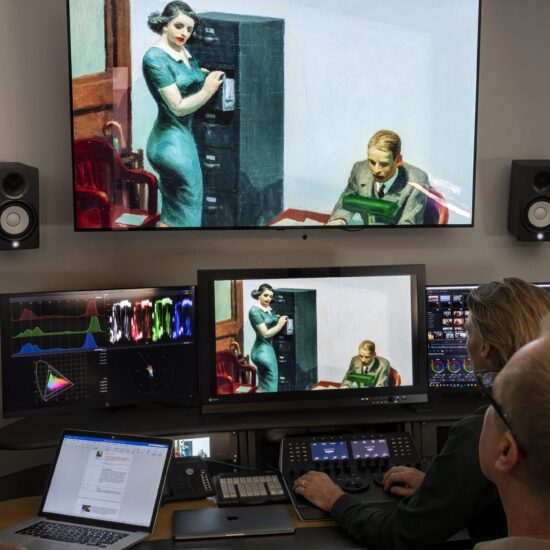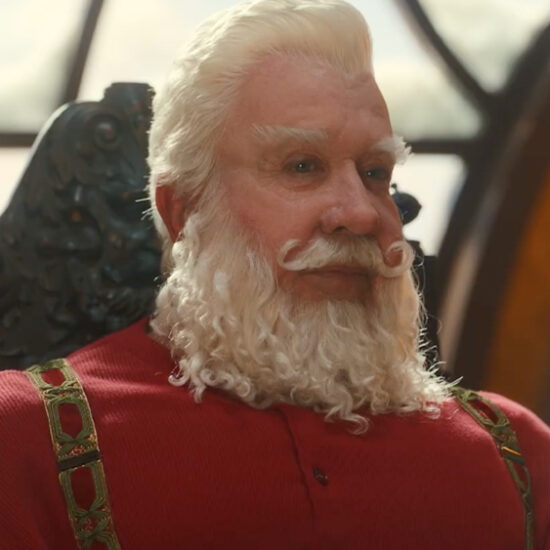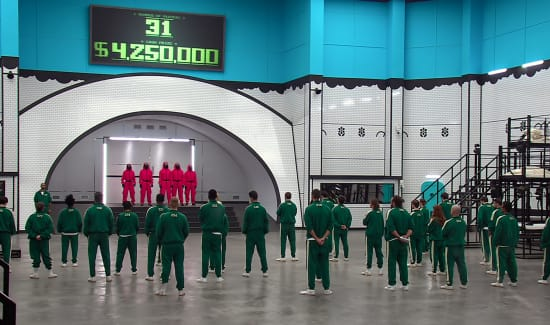
Cameos: An going series that explores when American Masters subjects make surprise appearances in the most unlikely of places.
In this odd pairing, legendary singer, dancer and bandleader Cab Calloway starred in these surreal Betty Boop cartoons to promote his music, “Minnie the Moocher” and “The Old Man of the Mountain.”
Before the popularization of television, cartoons in the 1920s and 30s were theatrically presented before full length features for all audiences. To contend with Walt Disney’s stronghold on animated shorts, Paramount Pictures became the distributor for Fleischer Studios in 1929. Run by brothers Max, Dave and Lou Fleischer, the animation studio had been making a name for itself as a pioneer of synchronized sound technology. Despite popular belief, Disney was not the first studio to release a sync sound cartoon. Fleischer Studios had released the first cartoon attempting synchronized sound in 1926—two years before Disney’s “Steamboat Willy.” Quickly, the Fleischers’ technological innovations, eclectic characters and music established the brand as one of Disney’s main rivals, making Popeye and Betty Boop household names.
As coordinated sound technology progressed, animators discovered that scenes of singing and dancing alleviated the difficulty of synchronization. At the time, Fleischer Studios was physically located near premier music venues in New York City, particularly the Harlem clubs featuring many prominent Black jazz musicians. The Fleischer brothers sought to further distinguish their product from Disney by using jazz as the backdrop for Betty Boop cartoons, allowing Paramount to use the medium as a promotional showcase. Under Paramount’s wing, Fleischer Studios had access to live footage of popular musical talent, including established names like Maurice Chevalier, Rudy Vallee, Ethel Merman, Louis Armstrong and Cab Calloway. In exchange for appearing in cartoons, musicians were granted performances in Paramount’s theater chain. As a result, the cartoons of this era represented a unique version of animation — one steeped in dark comedy, sexuality and the rising popularity of jazz.
Cab Calloway’s first cartoon collaboration
Having replaced Duke Ellington as the leader of the Cotton Club Orchestra, Cab Calloway’s star was rising in the early 1930s. Lou Fleischer recalled going to Harlem’s Cotton Club to select Calloway’s best songs to be transposed to animation and Calloway’s first collaboration with Fleischer Studios was in the 1932 cartoon, “Minnie the Moocher,” named after his hit song. Once a song was chosen, the writers used it as the basis for the cartoon’s general story. “Minnie the Moocher” begins with live action footage of Calloway dancing alongside the orchestra, spotlighting his distinctive physicality that is later personified in the cartoon characters modeled after him. The music dissipates and the short then transitions into its animated setting.
The cartoon begins with a tearful Boop reprimanded by her commanding parents. Boop is representative of a typical flapper—the provocative and oppositional feminine figure of her era at odds with the older generation. The established domestic setting of Betty Boop’s world starkly contrasts the fields and sunny landscapes of Disney’s “Merrie Melodies.” Boop is a human character (though she did not originate as one), the child of immigrants and trapped within a world which begins with realism and transforms alongside the music.
Hi-De-Ho meets Boop-Oop-a-Doop
For the most part, Hollywood used a distilled and primarily Caucasian-centric depiction of jazz during this era. Although Hollywood portrayals often depicted jazz as a symbol of liberation and youth, the jazz world in Fleischer cartoons is confrontational. Like Al Jolson’s character in “The Jazz Singer,” Boop decides to escape the pressures of home. But, unlike Jolson who runs toward the cheerful jazz culture of “Toot, Toot, Toosie,” Boop is drawn to danger. Jazz songs often explored material that may have been deemed taboo by many Americans at the time. “Minnie the Moocher” the song details Minnie’s involvement with drugs as Calloway sings that she had learned “to kick the gong around,” a phrase indicating opium use. However, the dark subject matter of the song did not prevent its success and it was the first number one hit single by a Black artist. Subsequently, “Minnie the Moocher” served as a trademark for the rest of Calloway’s musical career. (Younger audiences might recall Calloway’s performance of the song in “The Blues Brothers” [1980] at the age of 73).
Fleischer Studios cartoons heavily utilized metamorphosis and the visuals in the short do not directly correlate with Calloway’s lyrics. Instead, the various sexual and drug related content of the song’s narrative serve as a catalyst for surrealistic sequences. Although the cartoon does not show Boop taking any drugs, she finds herself lost in a world enhanced by the accompaniment of the song. Some of the surreal images she encounters include a ghastly walrus which transforms into a cat whose kittens suck it dry, a prison guard escorting skeletons to the electric chair and other creepy transfigurations. The incarnations of Cab Calloway personify his movements and unique physicality using Rotoscope (invented by Fleischer Studios) and Calloway’s signature “Hi-De-Ho” theme, which he used in various other songs. This consistent theme in Calloway’s performances earned him the nickname, “The Hi-De-Ho Man.” This call-and-response motif is similar to Betty Boop’s own scat-like catchphrase, “Boop-Oop-a-Doop.” Both characters’ distinctive vocal qualities and phrases immortalized them as American icons.
The dark world of “The Old Man of the Mountain”
Cab Calloway would go on to star in two more Betty Boop cartoons. The 1933 short “The Old Man of the Mountain” also begins with live footage of Calloway and the Cotton Club Orchestra. While “Minnie the Moocher” utilized periods of silence and dialogue to tell its narrative, “The Old Man of the Mountain” continuously incorporates the music. The pre-Hays Code hypersexuality of the era is clear. Rather than the moping character seen in the opening of “Minnie the Moocher,” Boop seems far more sexually aware of herself. The role of sex in relationship to the movements of the dancing is a central element of how Fleischer cartoons present the world, compared to the innocent relationship characterized by Disney between Mickey and Minnie Mouse.
As an owl voiced by Calloway explains the origins of the Old Man, a peripheral character ogles an unsuspecting and jiggling Boop. Clearly a threat, the Old Man provocatively taunts Betty with his encroaching steps and tongue flicks. The two characters participate in a call-and-response scat battle (which were common in jazz performances). As the song progresses, the Old Man showcases Calloway’s dancing before chasing Boop down the mountain, guzzling an alcoholic beverage and ripping her clothes off until the town animals come to her rescue.
The original lyrics of “The Old Man of the Mountain” do not imply the Old Man is a villain, but when he finally appears (voiced by Calloway), he is depicted as a Caucasian character. This was likely a directorial choice made by the Fleischers to avoid alienating potential audiences. By keeping the live action Black musician interludes separate from the actual narrative, Hollywood avoided exclusion from offended theaters that could willingly delete the portions which revealed Black artists. Lou Fleischer would eventually receive threats from the Ku Klux Klan for inviting Calloway to his home.
Animation relies on caricature at its core and American-produced animation was notoriously filled with offensive portrayals of Black culture and characters. Boop’s sidekick Bimbo, Felix the Cat, Bugs Bunny, Mickey Mouse and many other characters all have history in depicting and appropriating Black stereotypes. [Editor’s note: Fleischer Studios recently published a statement and essay on the complicated history of Betty Boop’s creation and influences].
In both cartoons, Betty Boop is lured in by the world personified by jazz and then threatened. Throughout the 1920s and 30s, Fleischer cartoons were set to Blackface minstrel songs and these continually exploited vaudeville acts. Although these shorts provided Black jazz performers a new kind of exposure, the formulas of the cartoons perpetuated negative myths about predatory Black men and jazz culture as alluring, absorbing and dangerous. Louis Armstrong was criticized by other jazz musicians for portraying stereotypical representations of Black men and it was notably a Betty Boop cartoon which marked the beginning of his film career. Although consistently portrayed as antagonistic characters, it is said Calloway felt being a part of the cartoons was a successful method for drawing crowds to his performances and he was pleased with his various incarnations.
The legacy of early Betty Boop cartoons
 Despite Betty Boop’s popularity, her cartoons never truly matched Mickey Mouse’s international success. By the mid-1930s, The Hays Office began enforcing censorship, inhibiting many of the Fleischers’ artistic and stylistic liberties. The unrestricted atmosphere of the 1920s began to disintegrate. Boop could no longer date Bimbo, her dresses lengthened and she was presented in a series of more domestic and traditional roles. Rather than a mischievous and flirtatious flapper, she was depicted as an unmarried teacher with a pet dog. Similarly, the surreal spaces and tones were made more generic, and by 1935, jazz was no longer an element of the Betty Boop flair. The surreal and dangerous world was changed and jazz themes were replaced with pop tunes. By the 1950s, the United Productions of America, Metro-Goldwyn-Mayer and many other studios stopped cartoon music and a musicians strike further inhibited music specifically designated and created for animated shorts. Instead, studios began the practice of recycling music from past cartoons. As censorship tightened and Fleischer Studios faced other obstacles, the quality, style and methodology of their cartoons changed. Because Paramount’s front office wanted to reflect more family-friendly material to compete with MGM, they pushed for uniform structure and simplified content.
Despite Betty Boop’s popularity, her cartoons never truly matched Mickey Mouse’s international success. By the mid-1930s, The Hays Office began enforcing censorship, inhibiting many of the Fleischers’ artistic and stylistic liberties. The unrestricted atmosphere of the 1920s began to disintegrate. Boop could no longer date Bimbo, her dresses lengthened and she was presented in a series of more domestic and traditional roles. Rather than a mischievous and flirtatious flapper, she was depicted as an unmarried teacher with a pet dog. Similarly, the surreal spaces and tones were made more generic, and by 1935, jazz was no longer an element of the Betty Boop flair. The surreal and dangerous world was changed and jazz themes were replaced with pop tunes. By the 1950s, the United Productions of America, Metro-Goldwyn-Mayer and many other studios stopped cartoon music and a musicians strike further inhibited music specifically designated and created for animated shorts. Instead, studios began the practice of recycling music from past cartoons. As censorship tightened and Fleischer Studios faced other obstacles, the quality, style and methodology of their cartoons changed. Because Paramount’s front office wanted to reflect more family-friendly material to compete with MGM, they pushed for uniform structure and simplified content.
Like Calloway, whose career received renewed attention after “The Blues Brothers,” Betty Boop cartoons were re-popularized in the 1970s with appreciative audiences, particularly in Europe and Asia where the original cartoons were syndicated. While Disney used the Rotoscope to create a human grace in Snow White’s dancing, the Fleischers used it for shuffling walruses, clowns and villains. As opposed to its competitors, Fleischer cartoons were distinct for their experimental and sexual creations in landscapes influenced in part by New York’s jazz scene. Jazz songs were not just background music, but also used as a springboard for the themes, narrative and movement of the animation. These cartoons explored surrealism, dark comedy, sexuality, disturbing racial renderings and other adult concepts set in crumbling landscapes, and the issues addressed remain tied to real forces and personalities within the world. Fleischer Studios’ distinctive animation style, relationship with renderings of the human form and exploration of darker subject matter make “Minnie the Moocher” and “The Old Man of the Mountain” powerful historical and social statements about the era from which they emerged. More than further popularize jazz in America, these shorts created a voice for race, ethnicity, youth culture and nationality that incorporated elements of both fantasy and reality.
Works Cited

















